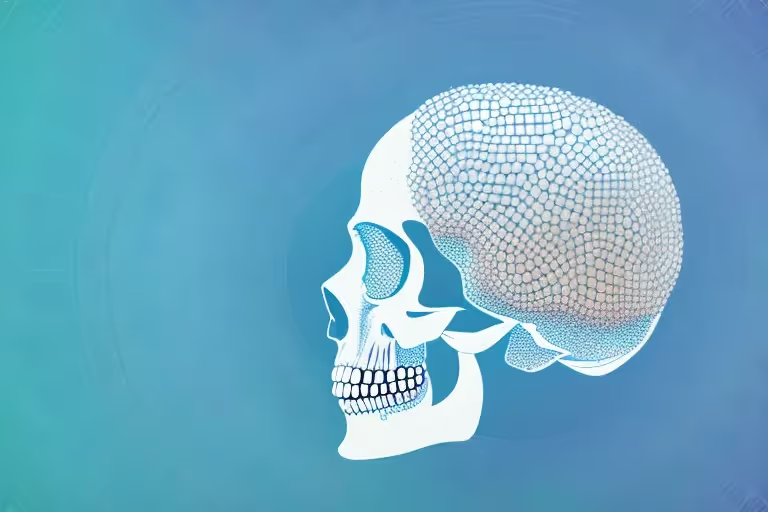Embarking on a journey into mindfulness meditation can be transformative. If you're new to this practice, don't worry. This step-by-step guide is designed to ease you into mindfulness meditation, making the insurmountable seem possible. You'll be meditating like a seasoned practitioner in no time.
Understanding Mindfulness Meditation
A closer look at mindfulness meditation helps demystify this practice. To fully appreciate its impact, we must delve into its origins, philosophy, and the science that validates its effectiveness.
Mindfulness meditation, originating from Buddhist traditions, is a practice that promotes consciousness and present awareness. Its central philosophy is rooted in the belief that inner peace and enlightenment come from acknowledging and accepting our current experiences without judgment.
Over the millennia, mindfulness has been adapted into various forms and techniques, but the core principle remains the same - fostering a heightened state of awareness and acceptance of the present moment.
The origins of mindfulness meditation can be traced back to ancient India, where it was first practiced by the Buddha himself. The Buddha, after attaining enlightenment, taught mindfulness meditation as a means to achieve liberation from suffering and attain inner peace.
The philosophy behind mindfulness meditation is deeply rooted in the Buddhist teachings of impermanence, non-attachment, and compassion. By cultivating mindfulness, practitioners learn to observe their thoughts, emotions, and sensations without getting caught up in them. This non-reactive awareness allows for a deeper understanding of oneself and the world.
Scientific research provides substantial evidence of the benefits of mindfulness meditation on our physical and mental well-being. Studies have shown significant changes in the brain's structure and functionality, leading to improved cognition, better stress management, and enhanced emotional health.
Neuroscientists have discovered that regular mindfulness practice can increase the thickness of the prefrontal cortex, the part of the brain responsible for executive functions such as decision-making, attention, and self-control. This increase in cortical thickness is associated with improved cognitive abilities and emotional regulation.
Furthermore, mindfulness meditation has been found to activate the parasympathetic nervous system, which is responsible for rest and relaxation. This activation leads to a decrease in the production of stress hormones, such as cortisol, and an increase in the production of feel-good neurotransmitters, such as serotonin and dopamine.
These neurobiological changes contribute to a wide range of benefits, including reduced anxiety and depression, improved immune function, and better sleep quality. In addition, mindfulness meditation has been shown to enhance empathy, compassion, and overall well-being.
These discoveries have played a vital role in integrating mindfulness meditation into healthcare, schooling, and even corporate environments globally. Many hospitals and clinics now offer mindfulness-based stress reduction programs to help patients manage chronic pain, anxiety, and other health conditions.
In schools, mindfulness programs have been implemented to improve students' focus, attention, and emotional resilience. Teachers have reported positive outcomes, including reduced behavioral problems and increased academic performance.
Even in the corporate world, mindfulness meditation is gaining recognition as a valuable tool for stress management and enhancing productivity. Companies like Google, Apple, and Nike have introduced mindfulness programs for their employees, recognizing the positive impact it can have on workplace well-being and performance.
In conclusion, mindfulness meditation is a practice that has deep roots in ancient traditions and is now supported by scientific research. Its philosophy of present moment awareness and non-judgmental acceptance offers numerous benefits for our physical, mental, and emotional well-being. As mindfulness continues to gain popularity, its transformative power is being recognized and embraced in various aspects of our lives.
Aura has the world’s largest and best collection of Meditations and hundreds of Coaches to choose from.
Try it Free!
The Benefits of Mindfulness Meditation
The practice of mindfulness meditation affects numerous aspects of our lives. Its benefits extend from promoting physical health to enhancing mental well-being.
But what exactly is mindfulness meditation? It is the practice of bringing one's attention to the present moment, without judgment. By focusing on the here and now, individuals can cultivate a sense of calm and clarity.
Let's delve deeper into the benefits of mindfulness meditation:
Physical Health Benefits
Regular mindfulness meditation can lead to better sleep quality, lower blood pressure, and improved immune system function. These benefits arise from the calming effect meditation has on the body, reducing stress and encouraging better health habits.
But it doesn't stop there. Studies have shown that mindfulness meditation can also have a positive impact on weight management. By increasing awareness of hunger and satiety cues, individuals practicing mindfulness meditation are more likely to make healthier food choices and maintain a balanced diet.
Further studies have also linked mindfulness meditation to pain management, a definite advantage for those contending with chronic pain conditions. By cultivating a non-judgmental attitude towards pain, individuals can reduce their suffering and improve their overall quality of life.
Mental Health Benefits
Mindfulness meditation can significantly benefit mental health by reducing anxiety, stress, and symptoms of depression. These effects usually happen because mindfulness encourages acceptance and reduces rumination on past or future concerns.
But what exactly is rumination? It is the act of continuously thinking about the same thoughts, often negative ones, without finding a resolution. This pattern of thinking can lead to increased stress and anxiety. However, mindfulness meditation helps individuals break free from this cycle by redirecting their attention to the present moment.
Furthermore, mindfulness meditation has been found to enhance emotional well-being. By cultivating a non-reactive attitude towards emotions, individuals can observe their feelings without judgment. This allows for a greater sense of self-awareness and the ability to respond to emotions in a more adaptive way.
These tools for coping with emotional distress can be especially helpful in turbulent times, providing a sturdy rock in the midst of life’s tumultuous sea.
In conclusion, mindfulness meditation offers a wide range of benefits for both physical and mental health. By incorporating this practice into our daily lives, we can experience improved well-being and a greater sense of inner peace.
Preparing for Mindfulness Meditation
As with any journey, the right preparations can make all the difference. Depending on your environment and timing, your mindfulness meditation practice can be a deeply enriching experience.
Before you begin your mindfulness meditation practice, it is important to create a suitable environment that promotes a sense of tranquility and calmness. Finding a space that feels serene and comforting, free from distractions, is essential. This space could be a quiet corner of your room or a secluded spot in your garden. You'd want it to be a place that invites tranquility, encouraging a deeper state of awareness.
When preparing your meditation space, remember that simplicity is key. You don't necessarily need any props or fancy furniture. A comfortable seat and a mild climate are sufficient to create a conducive environment for your practice.
Once you have set up your meditation space, it is important to choose the right time for your mindfulness practice. The best time for mindfulness meditation varies from person to person. Some individuals find early mornings to be peaceful and conducive to meditation, while others may prefer meditating just before bed to unwind and relax. The key is to find a time that suits your schedule and allows you to dedicate a few undisturbed moments for meditation.
While the time you choose is important, it is ultimately the consistency of your practice that matters most. Establishing a regular meditation routine can greatly enhance the benefits of mindfulness meditation. By committing to a consistent practice, you create a habit that becomes a natural part of your daily life, allowing you to experience the transformative effects of mindfulness on a deeper level.
Basic Techniques in Mindfulness Meditation
While there are numerous mindfulness meditation techniques, we will focus on two that are most beginner-friendly: breathing techniques and the body scan.
Mindfulness meditation is a practice that involves bringing your attention to the present moment, without judgment. It can help reduce stress, improve focus, and enhance overall well-being.
Breathing Techniques
Using your breath as a focus point is one of the simplest methods to begin with. Sit comfortably, close your eyes, and start by paying attention to your inhale-exhale cycle. Feel the sensation of the breath as it enters and leaves your body.
As you continue to focus on your breath, you may notice that your mind starts to wander. Thoughts, emotions, and sensations may arise. This is completely normal. When you become aware that your mind has wandered, gently bring your attention back to your breath without self-judgment.
With regular practice, breathing techniques can help cultivate equanimity and a sense of calm. They provide a anchor for your attention, allowing you to observe the present moment with greater clarity.
Body Scan Technique
The body scan is another effective method that can help anchor your awareness. Begin by finding a comfortable position, either sitting or lying down. Close your eyes and bring your attention to your toes.
As you focus on your toes, notice any sensations you feel in that area. It could be a tingling sensation, warmth, or even a sense of relaxation. Whatever you experience, simply acknowledge it without trying to change it.
Slowly and gradually, move your attention upward through your legs, torso, arms, and finally, your head. Take your time with each body part, observing any sensations that arise. It's important to approach this practice with a gentle curiosity, without any expectations or judgments.
The body scan technique helps develop a deeper connection between your mind and body. It allows you to become more attuned to the physical sensations present in each moment, fostering a greater sense of embodiment.
Remember, mindfulness meditation is a skill that takes time and practice to develop. It's not about achieving a particular state of mind, but rather about cultivating a non-judgmental awareness of the present moment. With dedication and patience, these techniques can become valuable tools for self-discovery and personal growth.
A Step-by-Step Guide to Mindfulness Meditation
With the basics covered, let's look at a step-by-step guide to your first mindfulness meditation session.
Step 1: Find a Quiet and Comfortable Place
Identify a calm, distraction-free spot where you can sit comfortably. This could be on a chair, a cushion, or even outdoors. Ensure that the temperature and lighting cater to your comfort.
Step 2: Set Your Intention
Before you begin, clear your mind and set your intention. This could be as simple as intending to stay present throughout the session or cultivating a sense of calm. An intention gives your practice direction and deeper meaning.
Step 3: Focus on Your Breath
Breathe naturally, and focus your attention on your breath at your nostrils or abdomen. Feel your breath's rise and fall without striving to change it. This can help anchor your attention in the present moment.
Step 4: Acknowledge Your Thoughts
When thoughts arise, acknowledge them without judgment. Understand that the goal isn't to rid your mind of thoughts, but to prevent these thoughts from overpowering your focus on the present moment.
Step 5: Return to Your Breath
If you notice that your mind has wandered, gently bring your attention back to your breath. It's completely normal for the mind to wander during meditation. The practice is in kindly and patiently returning your attention to your breath.
To build a sustainable mindfulness meditation practice, the Aura Health app can be an invaluable ally. With guided meditations tailored to suit your requirements, Aura makes it easier to incorporate mindfulness into your routine. Dive in to create a healthier, happier, and more mindful you.
Aura is Your All In One App for Meditation, Mindfulness Wellbeing
Find peace every day with one app for your whole well-being. There is no one-size-fits-all solution to mental well-being. Aura is the first all-in-one wellness app that learns how to best help you. Discover an endless library of expert-created tracks for your well-being, all taught by the world’s best coaches, therapists, and storytellers. With Aura's personalized recommendations, you can find peace every morning, day and night.



.webp)






.avif)

%20(1).avif)


.avif)
.avif)
.webp)


.avif)


















































































































.avif)

















.svg)









